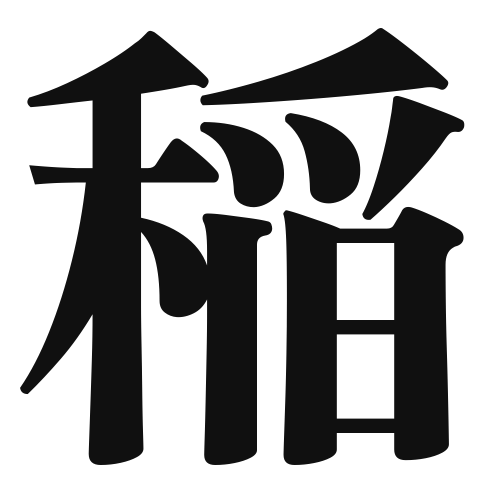1. Overview of Meaning
The kanji “稲” (pronounced “ina”) means “rice plant” or “paddy rice.” It specifically refers to the plant that produces rice, which is a staple food in many Asian countries, including Japan.
2. Formation and Radical
The kanji “稲” is a phonetic-ideographic character (形声文字), which combines a meaning component and a sound component. The left part, “禾,” represents “grain” or “cereal,” while the right part, “稲,” indicates the pronunciation.
The radical of “稲” is “禾,” which is commonly associated with plants and grains.
3. Examples of Usage
Common words and phrases that include “稲” are:
- 稲作 (いなさく, inasaku) – rice cultivation
- 稲穂 (いなほ, inaho) – rice ear (the part of the plant that holds the grains)
Example sentence in daily conversation:
「日本では、稲作が重要な産業です。」
(In Japan, rice cultivation is an important industry.)
4. Synonyms and Antonyms
Similar kanji with related meanings include:
- 米 (こめ, kome) – meaning “rice” (referring to the grain itself, as opposed to the plant).
Antonyms include:
- 麦 (むぎ, mugi) – meaning “wheat,” which is a different type of grain.
5. Cultural and Historical Background
The kanji “稲” is deeply connected to Japanese culture, as rice is a fundamental part of the Japanese diet and agricultural practices. It is often associated with various traditions and festivals.
Proverbs and idioms related to rice include:
- 「米の飯」 (こめのめし, kome no meshi) – literally “rice meal,” meaning a staple or basic food.
Rice also plays a significant role in Shinto rituals and is often seen as a symbol of prosperity and fertility in Japanese culture.
